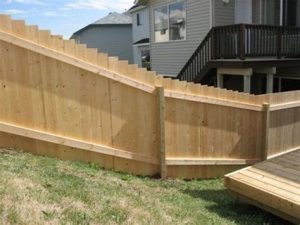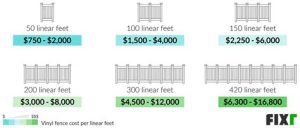Navigate local regulations, apply for permits, prepare documentation, and follow up on approval status with our comprehensive guide for successful applications.Building a fence around your property can enhance privacy, security, and curb appeal, but before you start digging, it’s essential to navigate the often-complex process of obtaining a fence permit. Different municipalities have varying regulations, which can make the application process seem daunting. However, with a step-by-step approach, you can simplify the experience and ensure your project is compliant with local laws. This guide will walk you through understanding the specific regulations in your area, researching the application process, preparing the necessary documentation, submitting your application, and following up on its status. By the end, you’ll feel confident and well-equipped to secure your fence permit and bring your vision to life. Let’s get started!
Understanding Local Regulations
When embarking on the journey to obtain a fence permit, the first essential step is understanding local regulations. Each municipality or county has its own set of rules and requirements that govern the installation of fences. This could include height restrictions, designated setback lines, and material regulations. Familiarizing yourself with these local regulations is crucial to ensure your project complies with the law.
Start by visiting your local government’s website or contacting the zoning board. They typically provide guidelines and information on what is permissible within your area. Also, it may be beneficial to look at your neighborhood’s specific zoning ordinances, which can often be accessed online. This proactive approach can save you time and potential headaches down the line.
In some areas, you may also need to check if there are homeowners’ association (HOA) rules that might impose additional restrictions beyond the local regulations. Ensuring that your fence design aligns with these requirements is critical, as failures to adhere can lead to fines or the need to dismantle your fence.
Researching Permit Application Process
When you’re ready to obtain a fence permit, the first crucial step is researching the permit application process specific to your local jurisdiction. Each area may have different requirements and procedures, so it’s essential to gather this information to streamline your application.
- Visit Local Government Websites: Most municipalities have an official website where you can find pertinent information regarding building permits, including fencing.
- Contact the Local Building Department: If the information online is insufficient, reaching out directly to the local building department can provide clarity on specific requirements.
- Gather Documents: Understand what documents you will need, such as property surveys, diagrams, and any other relevant paperwork.
It’s also beneficial to check for any zoning regulations or homeowner association (HOA) rules that might affect your fence installation. These can include restrictions on height, materials, or placement that you need to adhere to.
As you delve deeper, take note of application deadlines and any fees associated with the permit. Having all this information organized will save you time and potential frustrations as you move forward in the process.
Preparing Required Documentation
When you’re planning to obtain a fence permit, one of the most important steps is preparing the required documentation. This documentation will vary depending on your local regulations and the specific details of your fence project, but there are some common elements that you’ll need to include.
- Site Plan: A detailed drawing that shows the property boundaries, the proposed location of the fence, and any existing structures.
- Property Deed: This document proves ownership of the property and may be required to ensure you are authorized to make changes to the land.
- Fence Design Specifications: You might also need to submit detailed plans of the fence, including materials used, height, and design.
- Financial Documentation: If the project requires financing, be prepared to provide proof of funds or loans.
Once you have collected all the necessary documents, double-check that everything is complete and compliant with your local regulations. Missing or incorrect information can delay the permit approval process.
Before submitting, maintain organized files for each document. This will not only help in the application process but will also be beneficial if you need to refer back to them later for any reason. In case of any uncertainties, consider reaching out to your local authorities for clarity on what documentation is specifically required.
Submitting Application to Local Authorities
Once you have thoroughly prepared your fence permit application, it’s time to submit it to your local authorities. This process is crucial as it involves ensuring that all information provided is accurate and conforms to the specific regulations set by your locality. Below is a step-by-step guide that will help you navigate this important phase.
1. Review Your Application
Before submission, double-check your application for any missing information or errors. Ensure that all required documentation is attached; this usually includes site plans, proof of ownership, and any other relevant documents.
2. Identify the Correct Office
Determine which local office is responsible for handling fence permit applications. This might be the planning department, zoning office, or another relevant authority in your city or county. Knowing the right office will help streamline the submission process.
3. Choose Your Submission Method
Most local authorities will offer multiple ways to submit your application including in-person delivery, mail, or online submission. Check their website or contact them directly to understand their preferred method. It’s often beneficial to choose an electronic submission to receive instant confirmation of your application.
| Submission Method | Advantages | Considerations |
|---|---|---|
| In-Person | Immediate feedback and assistance. | Travel time, possibility of long wait times. |
| Convenient and no need to travel. | Potential delays; no instant confirmation. | |
| Online | Quick submission and tracking. | Need access to technology and internet. |
4. Pay the Required Fees
Be prepared to pay any associated fees when submitting your application. These fees vary by location and can be a flat fee or a percentage based on the project cost. Make sure to check the payment methods accepted by your local authority to avoid delays.
5. Obtain a Receipt
After you submit your application, request a receipt or confirmation number. This will serve as proof that you have submitted your application and will be crucial for tracking its status later on.
6. Keep Copies of Everything
It’s important to keep copies of your submitted application and all supporting documents for your records. This can save you a lot of trouble if you need to prove what was submitted or if any issues arise during the application process.
By following these steps to submit your fence permit application to local authorities, you can ensure that your submission is handled smoothly and efficiently. Remember, patience is key as approval processes can vary widely in duration depending on local regulations and workloads.
Following Up on Permit Approval Status
After you have submitted your fence permit application, it’s crucial to actively follow up on its approval status. This step ensures that you stay informed about any potential issues and can address them promptly. Depending on your local authorities, the timeline for permit approval can vary, often taking anywhere from a few days to several weeks.
Start by noting down the application submission date and any case number provided. This information will be helpful when you contact the relevant authorities for updates. You can typically follow up via phone or email, but make sure to be respectful and patient, as the staff may be handling multiple applications.
If you find that your application is delayed, don’t hesitate to inquire about the specific reason for the hold-up. It could be due to missing information, zoning issues, or a backlog in the processing queue. Gathering this information will enable you to make any necessary adjustments to expedite the approval process.
Frequently Asked Questions
What is a fence permit?
A fence permit is an official approval from local authorities that allows property owners to construct a fence on their property according to specific guidelines and regulations.
Why do I need a fence permit?
Obtaining a fence permit ensures that your fence complies with local zoning laws and building codes, which can help prevent disputes with neighbors and avoid potential fines.
How do I know if I need a permit for my fence?
To determine if you need a permit, check with your local zoning office or building department, as requirements can vary based on location, fence height, and type.
What documents do I need to submit for a fence permit?
Typically, you will need to provide a site plan showing the proposed location of the fence, construction materials, and sometimes photos of the property.
How long does it take to get a fence permit approved?
The approval process for a fence permit can range from a few days to several weeks, depending on the local authority’s workload and the complexity of your application.
What are common reasons for fence permit denials?
Common reasons for denials include non-compliance with height restrictions, placement within property lines, and failure to adhere to local zoning regulations.
Can I appeal a fence permit denial?
Yes, if your fence permit is denied, you can typically file an appeal with your local zoning board or planning commission to seek reconsideration of your application.





